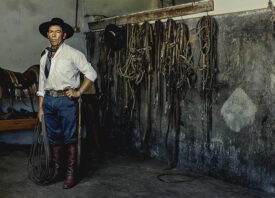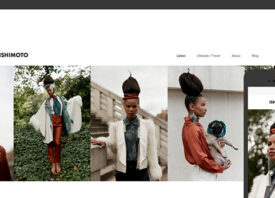Search this site
Photographer Katja Feldmeier on How picdrop Simplified Her Image Delivery Workflow (Sponsored)
When I was a photo editor, one of the most frustrating parts of the job wasn’t meeting deadlines or wrangling talent; it was simply getting the images from photographers in a timely manner. Files took forever to download, links expired, Dropbox would fill up. It always felt like something was holding up the process. As file sizes and shoot volumes continue to grow, this remains a challenge for photographers and creative teams alike. But for Berlin-based portrait photographer and YouTube creator Katja Feldmeier, finding picdrop five years ago helped her solve these common issues.
Feldmeier is best known for her stylized, expressive portraiture with actors, artists, and business clients. Her work has appeared in Vogue Germany, Süddeutsche Zeitung, and Zeit Online, among others. Through her popular YouTube channel, she offers practical insight to other photographers navigating the business side of creative work. Her switch to picdrop reflects a broader shift in the industry: moving away from generic file transfers and toward tools designed specifically for visual workflows.
“At the beginning of my career, I was sending way fewer files,” Feldmeier tells us. “I was predominantly shooting on analog cameras.” When she did need to deliver images, it was often through the free version of WeTransfer. But as she transitioned to digital photography and her file counts grew (sometimes hitting 200–300 pre-selects per session), the need for a more efficient solution became clear. “I needed to find software that was quicker and more collaborative for me and my clients,” she says. “picdrop was the most streamlined I could find on the market.”
Feldmeier begins using picdrop once she’s ready to share pre-selects with clients. She creates a personalized gallery of low-res JPEGs and applies design customizations to ensure the presentation feels professional.. “It really helps me to upsell bigger packages to my portrait clients,” she adds. “Most people just end up loving and selecting more images on picdrop, which in turn means more sales for me.”
Client interaction is central to the appeal. Feldmeier emphasizes the clarity and simplicity of having feedback consolidated in one place. “Now there is just way less going back and forth with clients, and rarely any confusion over which picture they’ve selected or want me to edit in a certain way,” she says. “All of the communication happens in the notes section of the gallery.”
One of Feldmeier’s favorite features is the ability to turn off downloads entirely. “I simply don’t want clients to get their hands on files that are unedited or not in their final stage,” she says. “By switching off downloads, I can make sure a client is fully involved in the selection process without having to hand over any files I don’t want them to have.”
She also points to the newly introduced drawing tool, which allows clients to mark specific areas on an image for retouching. “I find it super straightforward and helpful.” Though Feldmeier doesn’t currently use picdrop with a full team of collaborators, her clients often do. “My actor clients share their picdrop galleries with their agents, who collaborate with them to make the final selections for a sedcard,” she says. “Agents can create their own sub-galleries, and everybody can contribute. It makes the process easier for all involved.”
In terms of broader impact, she credits picdrop with significantly improving the post-shoot experience for clients. “The biggest win for me is that this software just makes the user experience for my customers much more enjoyable, aesthetic, and foolproof,” she says. “No crazy download times, no copy-pasting file names into emails—just a beautiful interface that elevates the work I’ve done.”
Outside of client delivery, Feldmeier also uses picdrop for her creative reference. “I like to use it as my own little archive when I need to source some of my old work for a portfolio,” she explains. “It’s like a simplified catalogue of my past work, much more visual than any Lightroom catalog or hard drive I’d have to comb through.” For photographers navigating fast-paced production schedules and high client expectations, picdrop has become more than just a delivery tool. By reducing the friction in how images are shared, reviewed, and approved, it supports a cleaner, more organized workflow without compromising creative control. The result is a more seamless experience on both sides of the exchange, where the process of collaboration feels as considered as the work itself.



